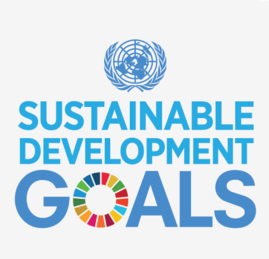Nigeria needs not less than US$337 billion to implement the Sustainable Development Goals (SDGs) from 2019 to 2022.
The UN Support Plan for the Sahel the cost of implementing the SDGs in Nigeria, is US$78.51 billion in 2018, US$80.65 billion in 2019, US$82.83 billion in 2020, US$$85.07 billion in 2021, and US$87.37 billion in 2022.
On the investment needs in the Sahel, the plan reported the cost of implementing the SDGs in the Sahel is projected to be between US$140.25 billion and US$157.39 billion per year during the first phase of the Support Plan (between 2018 and 2022) in the 10 Sahelian countries.
The plan said the 10 countries under the UN Integrated Strategy for the Sahel (UNISS) needed an average of US$1148.7 billion annually to implement the SDGs or US$743.55 billion from 2018 to 2022.
The overarching goal of the Plan, targeting 10 countries namely Nigeria, Burkina Faso, Cameroon, Chad, The Gambia, Guinea, Mali, Mauritania, Niger, and Senegal, is to scale up efforts to accelerate shared prosperity and lasting peace in the region.
The Plan, covering the period 2018-2030, would help implement identified priorities to achieve the 2030 Agenda for Sustainable Development and the African Union Agenda 2063, the report said.
The plan, however, stated that public-sector funding gap, on average, remained at 36.2 per cent of the required resources.
UNISS was approved by the Security Council in 2013 and is a part of a preventive and integrated approach to strengthening governance, security and development in the region.
The plan noted that the Sahel is as much a land of opportunities as it is of challenges, and it is blessed with abundant human, cultural and natural resources, offering tremendous potential for rapid growth.
The plan aims at mobilising public resources and triggering private investments in the 10 countries in support of ongoing efforts and initiatives by governments, international and regional organisations, and other partners.
It said in terms of natural resources, the Sahel is one of the richest regions in the world and is abundant with oil, natural gas, gold, phosphates, diamonds, copper, iron ore, bauxite, biological diversity and precious woods, among many other assets.
These natural endowments offer immense value for economic diversification, value-chain development and livelihoods, the UN plan said.
The Sahel is also endowed with more potential for renewable energy such as solar and wind than other regions of the world, the UN plan showed.
Its solar energy potential translates to about 13.9 billion Kilowatt hours per year compared to the world’s electricity consumption of 20 million Kilowatt hours per year, according to 2016 data.
The Sahel is also the most youthful region of the world with 64.5 per cent of youth aged less than 25 years, meaning investments in education and vocational training could yield a demographic dividend.
Nigeria needs $337b for SDGs
RELATED ARTICLES




